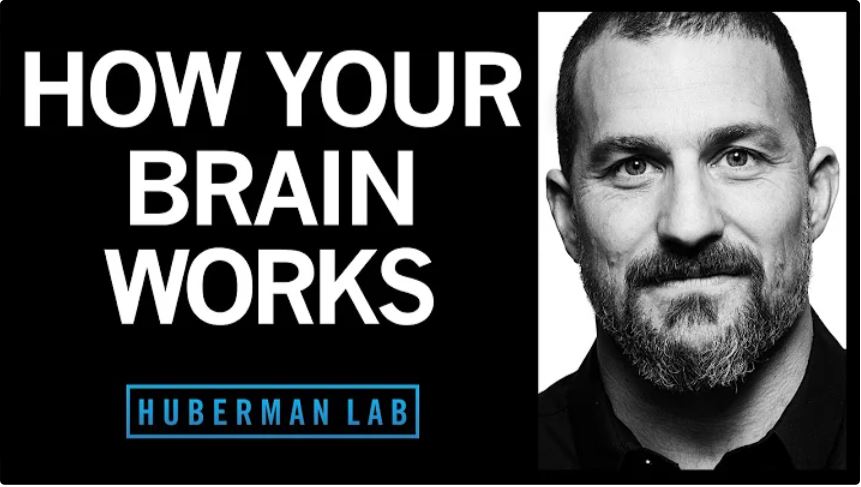While looking around for information about sleeping, I found this podcast series. I have enjoyed listening to how our brain and body work and implementing some of the “Tools” that Dr Andrew Huberman discusses. This is what I have taken away from episode 1, and then some more notes. Enjoy the read!
My Conclusion
The nervous system includes all the neural connections to and from the organs to the brain. Communications are sent via electricity and chemicals. A category of chemicals called neuromodulators affects our emotions and how our organs respond due to the amount of chemicals released. The brain can control how it interprets sensory information but can’t block it out. Our nervous system is heavily built to make us automatic as possible. To learn anything new, we need to engage focus and agitation in the brain to help us open up neuroplasticity. Being well rested and taking 20 min to turn off from a learning bout that should be 90 minutes, one cycle of an ultradian rhythm. You experiment to find which cycle is best for you to learn and be motivated.

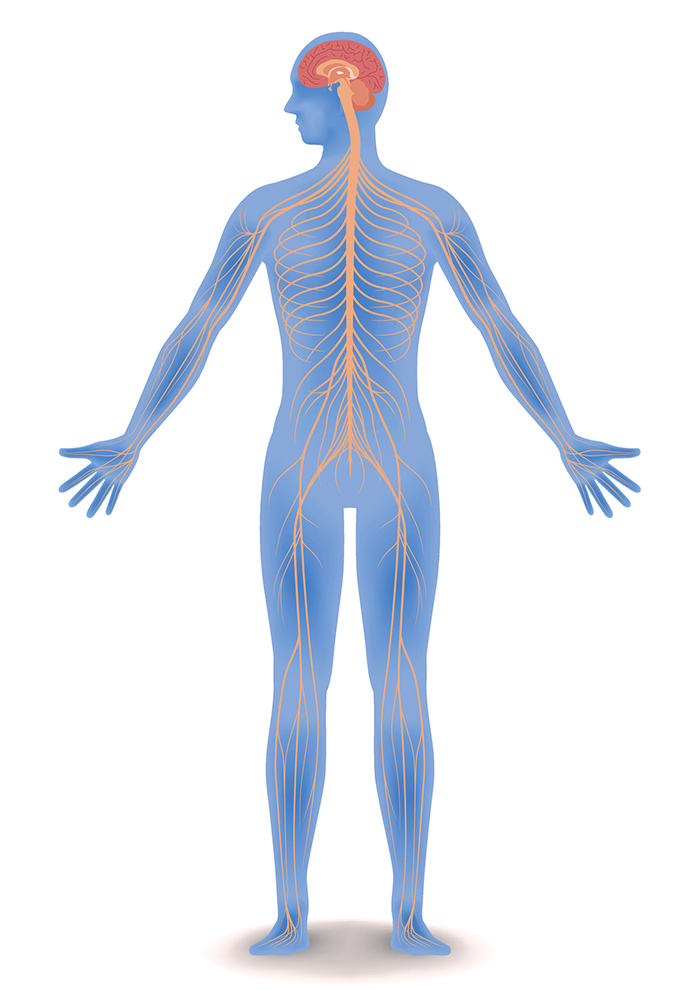
~Further Notes~
What is the Nervous System?
The nervous system includes your brain, spinal cord and all the connections to and from the organs of your body. So from the moment you’re born until the day you die, everything you think, remember, feel and imagine is your nervous system on a continuous communication loop. You may have heard of something called a Mobius strip. A Mobius strip is these impossible figures that you can’t tell where it starts and where it ends. If you have a stomach ache, you feel that in your stomach, but it’s your nervous system causing it. So when we want to talk about changing the self, we must think about the nervous system first. More specifically, we are made up of trillions of little cells, nerve cells that are called neurons. They’re separated by little gaps called synapses.
How does the Nervous System work?
Synapses are where the chemicals from one neuron are spat out, and the next nerve cell detects those chemicals and then passes electricity down its length to the next nerve cell. You’re a flow of electricity between nerve cells. You might be moving your arm or seeing something red, depending on which nerve cells are electrically active at a given moment.
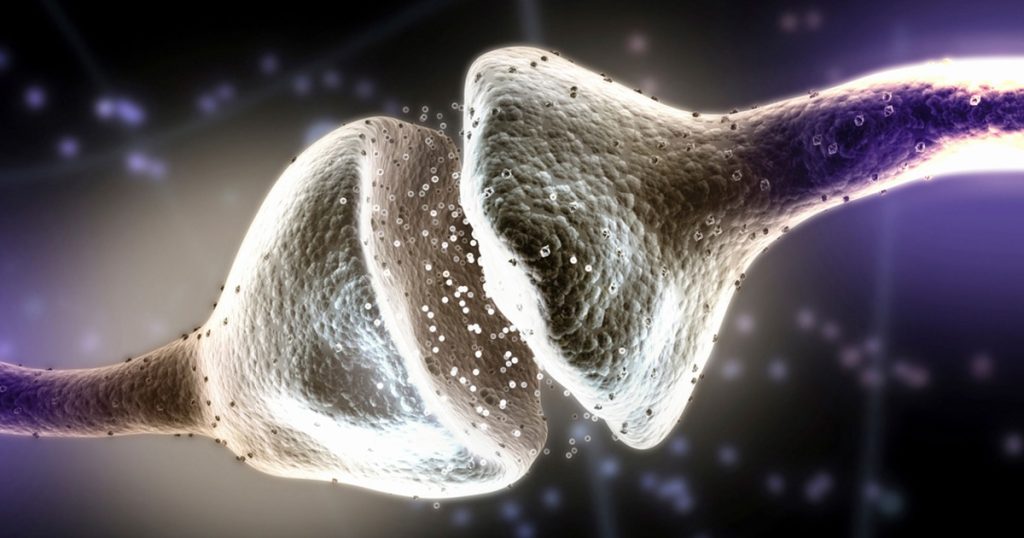
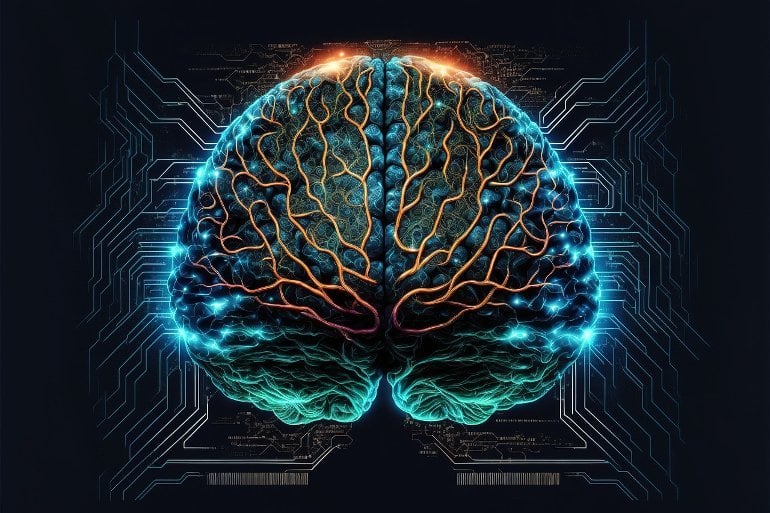
What does it mean for your brain to work?
Sensation – This is a non-negotiable element of your nervous system. You have neurons in your eye that perceive the colour of light and movement. You have neurons called sensory receptors in your skin that perceive touch. You have neurons in your ears that sense sounds. So we have sensation, and then we have perception.
Perception – is whichever sensations we happen to be paying attention to at any moment. You can experience perception by paying attention to the contact of the bottoms of your feet with whatever they are in contact with, maybe its shoes or the floor. When your “spotlight” of perception is on your feet, You are now perceiving what is being sensed there. The sensation was happening all along, however. So while sensation is not negotiable, you can’t change your receptors; your attention controls perception. We can do what’s called covert attention. We can focus on someone we’re listening to and place a second spotlight on something we’re eating. Attention is something that is absolutely under your control, in particular when you’re rested.


In our nervous system there are reflexive aspects of our nervous system. So we all know what it’s like to be reflexive. If you already know how to walk, you don’t think about your walking; you walk. That’s because the nervous system wants to pass off as much as possible to reflexive action. It just means that information flows through your senses, regardless of what you’re perceiving; that information flows up and directs your activity.

These are deliberate actions, perceptions, and thoughts. They require some effort and focus. You can focus your attention and energy on your behaviour however you want. It feels like it requires some effort and strain; you’ll feel a sort of mental friction. It’s going to be challenging.
Neuromodulators – Emotions are the product of the nervous system involving the activity of neurons. Neurons are electrically active, but they also release chemicals. The chemicals that influence our emotional states are called neuromodulators, like dopamine, serotonin, acetylcholine, and epinephrine. They bias which neurons are likely to be active and which ones are likely to be inactive. Serotonin is a molecule that, when released, tends to make us feel good about what we have, our sort of internal landscape and our resources. In contrast, dopamine is a molecule of motivation toward things outside us that we want to pursue. When dopamine is released, if it attaches to a receptor on the heart, it might make the heart beat faster, whereas if it goes and attaches to muscle, it might have a completely different effect on the muscle. When we talk about feelings, we have to consider these neuromodulators. We generally feel emotions are not under our control; they geyser up within us and happen to us because they are somewhat reflexive. We tend to experience them in kind of a passive-reflexive way.
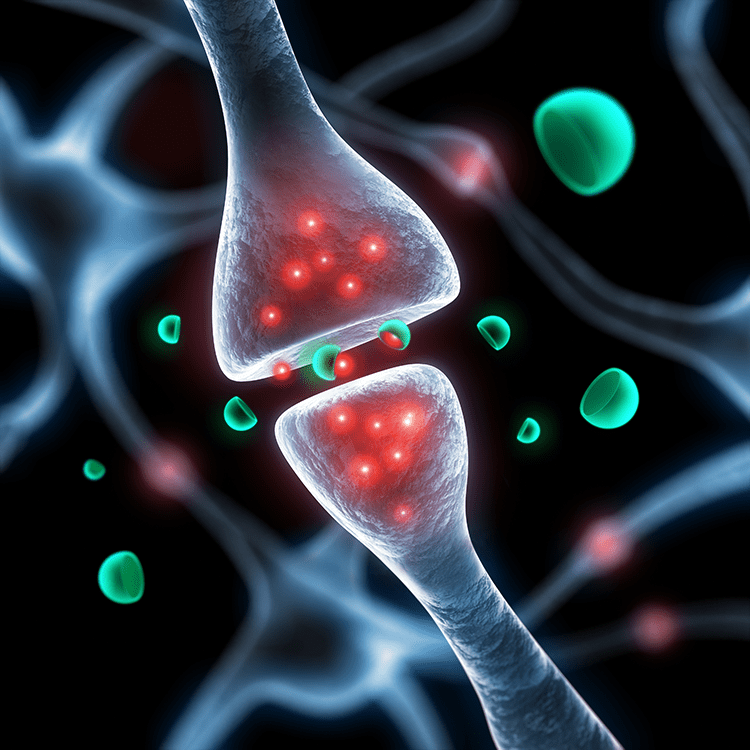

Thoughts – In many ways, they’re like perceptions, except they draw on not just what’s happening in the present but also things we remember from the past and anticipate about the future. They can be both reflexive, occurring all the time like pop-up windows, or they can be deliberate. We can decide to have a thought. Thought patterns and the neural circuits that underlie thoughts can be controlled.

There are the only things that will create any fossil record of our existence. After we die, the nervous system deteriorates, and our skeleton remains. Experiencing something joyful or sad can feel all-encompassing; we think it has meaning beyond that moment. Feelings that we have in our lifespan, none of that is carried forward, except for the ones that we take and convert into actions such as writing or engineering new things. The fossil record of our species and each one of us is through action, and that’s why our nervous system is devoted to converting sensations, perceptions, feelings, and thoughts into actions.
The central nervous system connects so heavily to the body because most of everything that we experience, including our thoughts and feelings, is designed to either impact our behaviour or not. Thoughts allow us to reach into the past and anticipate the future and not just experience what’s happening at the moment gives us the capacity to engage in behaviours that are not just for the moment but are based on things from the past, and we for the future.

Central pattern generators – This aspect of our nervous system allows movement through simple reflexive pathways. When you walk, you are walking because these groups of neurons generate right foot, left foot, right foot, and left foot kind of movement. However, when you decide to move in a particular deliberate way that requires a little more attention, you start to engage areas of your brain for top-down processing. Movement, just like thought, can be either reflexive or deliberate.

Neuroplasticity – Chemicals in your body that are released in association with effort are designed to make you feel agitated like a chemically induced low-level tremor; it’s called limbic friction, an error of your brain in the limbic system and the frontal cortex. If you want to understand neural plasticity to shape your behaviour, it requires top-down processing, this feeling of agitation. Adaptive neuroplasticity is the process by which neurons can change their connections; ideally, it is self-directed. The brain is incredibly plastic for kids from birth to about age 25; they can learn things passively and don’t have to work too hard to learn new things or acquire new languages. If you’re an adult and you want to change your neural circuitry at the level of emotions, behaviour or thoughts, you need to ask two essential questions. What particular aspect of my nervous system am I trying to change? Am I trying to change my emotions, perceptions, and sensations, and which ones are available for me to change? How are you going to go about that? What is the structure of a regimen to engage Neuroplasticity? The answer to that second question is governed by how awake or sleepy we are. What is incredible about the human nervous system is that we can direct our neural changes. Your brain can decide that you want to learn a language or be less emotionally reactive, and you can undergo a series of steps to make those changes.
What controls Neuroplasticity?
Neuromodulators control neuroplasticity in the adult human nervous system. We talked about earlier dopamine, serotonin and one in particular, acetylcholine, allowing a brief period in which whatever we’re sensing is mapped in the brain so that later, it will be easier for us to experience that sense again. Darkside is that it’s easy to get neural plasticity as an adult through traumatic experiences. But why is that? The reason is that when something terrible happens, two sets of neuromodulators are released in the brain epinephrine, which tends to make us feel alert and agitated and acetylcholine which creates an intense and focused spotlight. Epinephrine creates this unbelievable level of increased attention, and you can think of acetylcholine as the molecule that highlights whatever happens during that period. When we want to learn a new language or skill, we want to become more motivated; it requires the release of epinephrine. We have to have the alertness to have focus, and we have to have the focus to direct those plastic changes to particular parts of the nervous system.
How to access Neuroplasticity?
The feeling of agitation and strain is required for this process of neuroplasticity to get triggered. But all the rewiring occurs during sleep and non-sleep. Essentially doing something challenging and intense and then taking 20 minutes afterwards to turn off the deliberate, focused thinking and engagement deliberately actually accelerates neuroplasticity.

Accelerate learning while sleeping.

If people are learning a particular skill, and they hear a tone just playing periodically in the background like a bell in a deep sleep, if that bell is played, learning is much faster for the thing that they were learning while they were awake. So sleep is crucial and nonslip where we’re turning off our focus and in this state where our attention is all over the place. It’s essential for the consolidation, for the changes between the nerve cells that will allow what we were trying to learn to go from being deliberate, challenging, stressful and a strain to easy and reflexive.
Autonomic nervous system
What governs the transition between alert, focused, deep rest and deep sleep state is a system in our brain and body, a specific aspect called the autonomic nervous system, and it is essential to understand how this works. The way to think about the autonomic nervous system is that it works like a seesaw. Every 24 hours, we wake up in the morning and are generally more alert. And in the evening, we tend to become more relaxed and sleepy. And eventually, at some point, we go to sleep. So every 24 hours, we have a few years of our day optimal for thinking and focusing, learning and neuroplasticity and doing all sorts of things. We have energy as well, .and it is another phase of tiredness. Interestingly, we cannot concentrate, and both phases are essential for shaping our nervous system in the ways we want. We must master the transition between wakefulness and sleep and sleep and wakefulness. Sleep is essential for wound healing, learning, consolidating learning, the immune system and all aspects of our health, including our longevity.
Ultradian rhythm
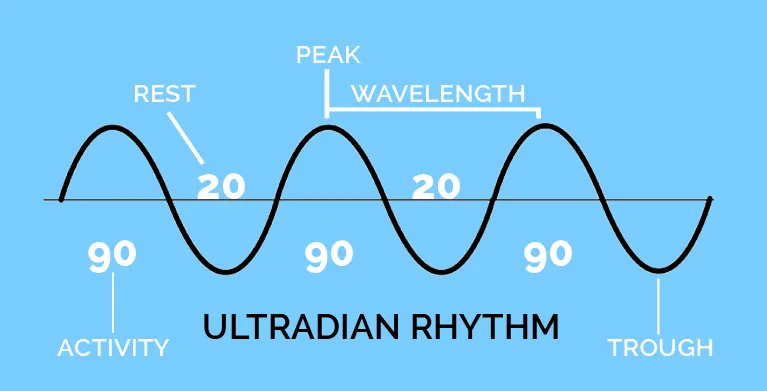
During the wakeful state, there is a system called ultradian rhythms which occur throughout the day and are shorter. The 90 min rhythm is the most relevant to this topic, and we’re going through it all the time, breaking our sleep into 90 segments. Early in the night, we get more of phase one and two lighter sleep, and then we go into deeper phases 3 and 4, then return to phases one and two. The rhythm repeats through phases one, two, and three all night, continuing into our wakeful state. The brain is not at the beginning of these cycles, the first 5-10 minutes. Optimally tuned, but as you get deeper, you can focus reasonably well and pop out the other end. So if you want to master and control your nervous system, it’s essential to understand that your whole existence occurs in these 90 min cycles, whether you are asleep or awake. So it would be best to learn how to use these cycles better. Engaging in focused learning bout each day would be good. And now we know how long that focus bout should be; it should be at least one 90-minute cycle. Engage these rhythms at the appropriate times of the day. Some people are excellent learners early in the day, not in the afternoon. So you can explore this process by paying attention to when your brain tends to be most anxious; when are you most focused? When are you least worried? When do you feel most motivated? When do you feel least motivated? This will give you an understanding of what will be required to shift your ability or whatever you choose.
Sponsors
Credits – Creator: chombosan | Credit: Getty Images/iStockphoto Copyright: chombosan, Copyright: Credit: Science Picture Co / Alamy Stock Photo

